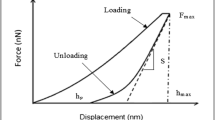Abstract
Particle size distribution is important for the development of both shaped and unshaped refractories. But it is more critical for the castables as they need to satisfy two near contradictory properties, flow and compaction (strength). Continuous particle size distribution of ordered particle sizing systems is employed primarily in advanced castables due to the many advantage such as reducing the water demand, imparting desired rheological characteristics (such as vibratory/thixotropic flow or free flow/self-leveling behavior), minimizing porosity, and maximizing particle contact for enhanced bonding and optimum strength development. Casting and placing properties of castables, which are dependent on flow behavior, are the most critical ones as they affect refractory property development in castables. Many researchers have worked on particle size distribution for castables. Primarily the works of Furnas, Andreasen and Dinger & Funk are well accepted in the castable industries mainly because of their simple approach. This paper reviews these distribution models for castables and their suitability in practical castable development.
Similar content being viewed by others
References
Homeny, J., Bradt, R.C.: Aggregate distribution effects on the mechanical properties and thermal shock behavior of model monolithic refractory systems. In: Fisher R, ed. Advances in Ceramics Vol. 13. Columbus, OH: The American Ceramic Society, (1985) 110–130
Furnas, C.C.: Grading Aggregates. Industrial and Engineering Chemistry 23 (1931) [7] 1052–1058
MacZura, G., Gnauck, V., Rothenbuehler, P.: In: Preprint of the First International Conference on Refractories. The Tech. Asso. of Refrac. (1983). 560–575
Mandelbrot, B.B.: A fractal set is one for which the fractal dimension strictly exceeds the topological dimension. In Fractals and Chaos. Springer, Berlin (2004) 38
Gouyet, J.F.: Physics and fractal structures. Masson Springer. Paris/New York (1996)
Andreasen, A.H.M.: Zur Kenntnis des Mahlgutes. Kolloidchemische Beihefte 27 (1928) [6–12] 349–458
Andreasen, A.H.M.: Über die Gültigkeit des Stokes’schen Gesetzes für nicht kugelförmige Teilchen. Kolloid-Zeitschrift 48 (1929) [2] 175–179
Andreasen, A.H.M.: Ueber die Beziehung zwischen Kornabstufung und Zwischenraum in Produkten aus losen Körnern (mit einigen Experimenten). Kolloid-Zeitschrift 50 (1930) [3] 217–228
Myhre, B., Hundere, A.M.: The use of particle size distribution in the development of refractory castable, XXV ALAFAR Congress, Argentina (1996)
Dinger, R., Funk, J.E.: Particle packing II — Review of packing of polydisperse particle systems. Interceram 41 (1982) [2] 95–97
Dinger, R., Funk, J.E.: Particle packing I — Fundamental of particle packing monodisperse spheres. Interceram 41 (1992) [2] 10–14
Dinger, R., Funk, J.E.: Particle packing II — Review of packing of polydisperse particle systems. Interceram 41 (1992) [2] 95–97
Dinger, D.R., Funk, J.E.: Particle packing III — Discrete vs continuous particle sizes. Interceram 41 (1992) [5] 332–335
Dinger, D.R., Funk, J.E.: Particle packing IV — Computer modeling of particle packing phenomena. Interceram 42 (1993) [3] 150–152
Dinger, D.R.: Ceramic Processing E-Zine. 1 (2003) [9] (http://www.dingerceramics.com/CeramicProcessingE-zine/CPEBackIssues/Vol1Num9.htm)
Myhre, B., Sunde, K.: Alumina based castables with very low content of hydraulic compound, Part 1: The effect of binder and PSD on flow and set. UNITECR 1995, Kyoto, Japan
Sarkar, R., Parija, A.: Effect of alumina fines on vibratable high alumina low cement castable. Interceram 63 (2014) [3] 113–116
Sarkar, R., Parija, A.: Effect of Alumina Fines on High Alumina Self-flow Low Cement Castables. Refractories World Forum 6 (2014) [1] 73–77
Sarkar, R., Parija, A.: Low cement high alumina castable: Effect of distribution co-efficient. International Conference on Advances in Refractories and Clean Steel Making, June 26–28, 2013, RDCIS, Ranchi, India
Sarkar, R.: Particle size distribution and distribution coefficient of castables. Invited talk, National Seminar on Advances in Refractory Raw Materials and Monolithics (ARMM 2013), November 12–13, (2013), Kolkata, India.
Author information
Authors and Affiliations
Corresponding author
Rights and permissions
About this article
Cite this article
Sarkar, R. Particle Size Distribution for Refractory Castables: A Review. Interceram. - Int. Ceram. Rev. 65, 82–86 (2016). https://doi.org/10.1007/BF03401156
Received:
Published:
Issue Date:
DOI: https://doi.org/10.1007/BF03401156




